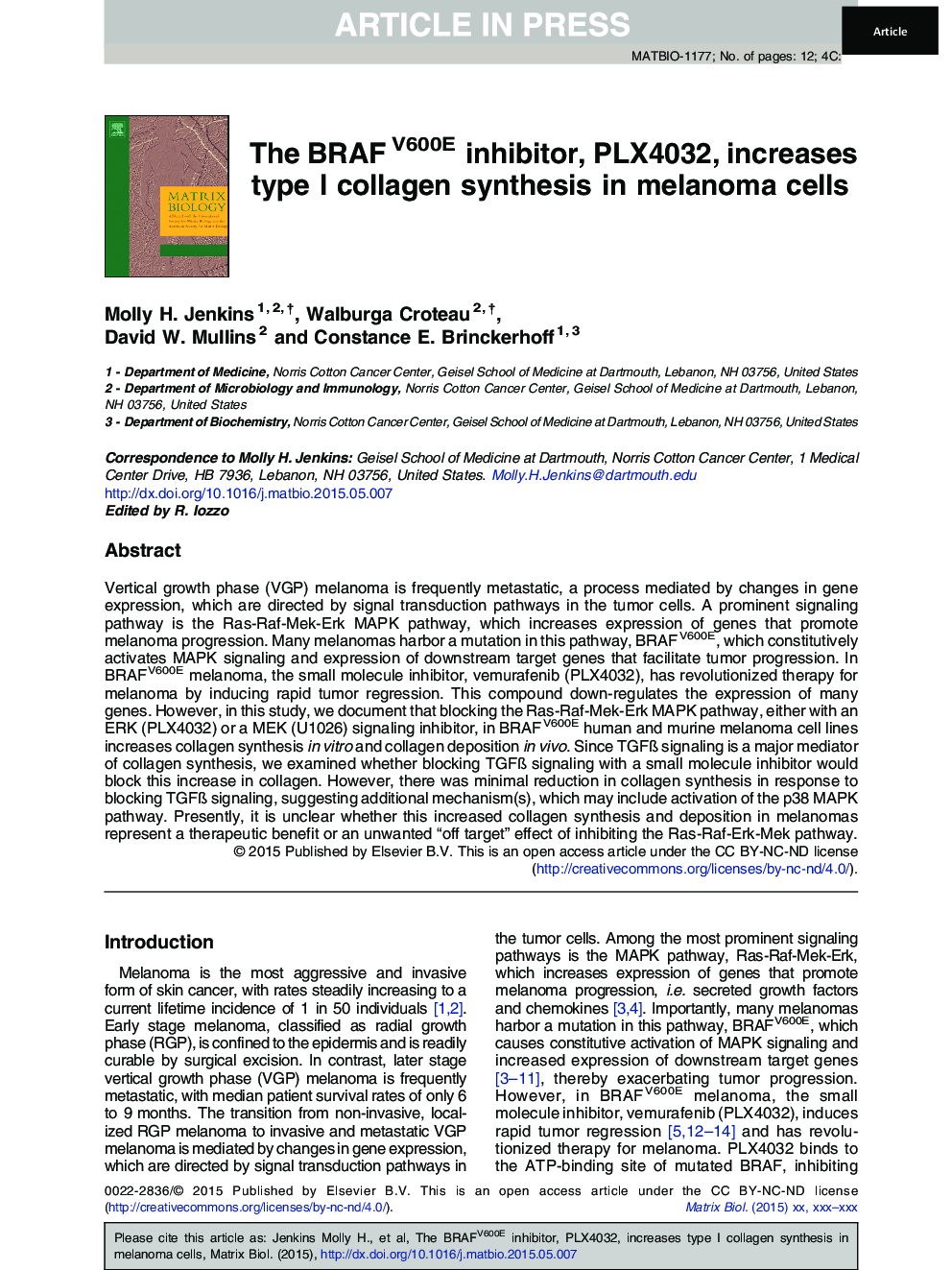| کد مقاله | کد نشریه | سال انتشار | مقاله انگلیسی | نسخه تمام متن |
|---|---|---|---|---|
| 8455193 | 1548010 | 2015 | 12 صفحه PDF | دانلود رایگان |
عنوان انگلیسی مقاله ISI
The BRAFV600E inhibitor, PLX4032, increases type I collagen synthesis in melanoma cells
دانلود مقاله + سفارش ترجمه
دانلود مقاله ISI انگلیسی
رایگان برای ایرانیان
کلمات کلیدی
موضوعات مرتبط
علوم زیستی و بیوفناوری
بیوشیمی، ژنتیک و زیست شناسی مولکولی
تحقیقات سرطان
پیش نمایش صفحه اول مقاله

چکیده انگلیسی
Vertical growth phase (VGP) melanoma is frequently metastatic, a process mediated by changes in gene expression, which are directed by signal transduction pathways in the tumor cells. A prominent signaling pathway is the Ras-Raf-Mek-Erk MAPK pathway, which increases expression of genes that promote melanoma progression. Many melanomas harbor a mutation in this pathway, BRAFV600E, which constitutively activates MAPK signaling and expression of downstream target genes that facilitate tumor progression. In BRAFV600E melanoma, the small molecule inhibitor, vemurafenib (PLX4032), has revolutionized therapy for melanoma by inducing rapid tumor regression. This compound down-regulates the expression of many genes. However, in this study, we document that blocking the Ras-Raf-Mek-Erk MAPK pathway, either with an ERK (PLX4032) or a MEK (U1026) signaling inhibitor, in BRAFV600E human and murine melanoma cell lines increases collagen synthesis in vitro and collagen deposition in vivo. Since TGFÃ signaling is a major mediator of collagen synthesis, we examined whether blocking TGFÃ signaling with a small molecule inhibitor would block this increase in collagen. However, there was minimal reduction in collagen synthesis in response to blocking TGFÃ signaling, suggesting additional mechanism(s), which may include activation of the p38 MAPK pathway. Presently, it is unclear whether this increased collagen synthesis and deposition in melanomas represent a therapeutic benefit or an unwanted “off target” effect of inhibiting the Ras-Raf-Erk-Mek pathway.
ناشر
Database: Elsevier - ScienceDirect (ساینس دایرکت)
Journal: Matrix Biology - Volume 48, October 2015, Pages 66-77
Journal: Matrix Biology - Volume 48, October 2015, Pages 66-77
نویسندگان
Molly H. Jenkins, Walburga Croteau, David W. Mullins, Constance E. Brinckerhoff,